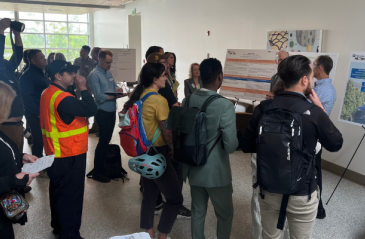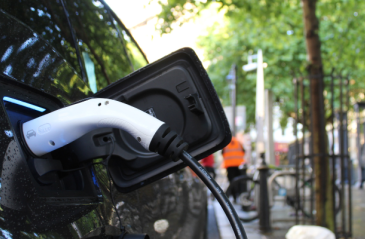
The information barriers holding back climate action and how to break them

Hundreds of millions of people in Asia remain unconnected
Share articleSuccessful countries have taken a multi-stakeholder approach to getting more people online
Share articlePolicymakers should ask themselves what the costs of inaction are – these are high too
Share articleWe put our vision for government into practice through learning partner projects that align with our values and help reimagine government so that it works for everyone.
Asia is a continent of contrasts, and this is true of its digital economy too. It's home to some of the highest connection speeds in the world, yet hundreds of millions of people remain unconnected - either because they have no access to the internet or cannot afford to use it. With the appropriate policies, investments and engagement, connecting the unconnected can transform lives, business, government and society.
We focus here on the one billion people in Asia16 - the 16 Asian countries which are neither as rich and well-developed as Singapore and Brunei nor as extensive as China and India. Asia16's internet population has doubled since 2010 to over 250 million users, and over 20% of its population live in countries where internet penetration is already at or above the global average - countries such as Malaysia, the Philippines and Viet Nam. With its internet penetration expected to double to by 2020, one in four of all new internet users globally will live in the region.
Today, 775 million unconnected citizens live in Asia16, many in rural areas with no access to infrastructure. in the region's five poorest countries. Almost 450 million are women. Over 100 million of Asia16's adults are illiterate - 62% of them women - and almost half of the region's adults are unbanked.
Bold and urgent action is required to create an accessible and affordable internet and citizens with the skills to use it, especially in Asia16's poorest countries. Massive investment is needed, too - perhaps US$10 billion to US$20 billion a year in telecoms infrastructure over the next decade, as well as US$4 billion to US$5 billion a year in Southeast Asia alone in order to develop a flourishing digital ecosystem.
The economic rationale for these investments is clear. Countries can boost their GDP by 2%-3% by reducing e-friction, the barriers to the digital economy's development. Malaysia has already become a third quintile country on BCG's e-friction Index - ranking 28th out of 65, higher than European countries such as Spain and Italy - while others still have some way to go.
There are four goals to be addressed as a matter of urgency: broadening internet infrastructure, making services more affordable, increasing the relevance of local digital content, and developing citizens' digital literacy skills. Successful countries have taken a comprehensive, multi-stakeholder approach to addressing these challenges.
Infrastructure access is a prerequisite. Governments can leverage practices that have worked elsewhere, such as defining . They could also make international bandwidth available. For example, Cambodia has no submarine cable landing station, and landlocked Lao PDR is dependent on low-capacity landlines to its neighbours. Promoting competition is another priority - as seen in Myanmar - since it encourages investment and reduces prices.
Affordability is a significant hurdle, however. No single developing country meets the UN's broadband affordability benchmark for those living in poverty. But several initiatives can bring costs down. Reducing taxes on devices and access, as Sri Lanka did by forgoing new taxes on mobile phones, is one option. Governments could also deploy spectrum auctions as an opportunity to attract infrastructure investment rather than as major revenue-generating exercises. They could also allow experimentation with different pricing models for internet services, and promote carrier-neutral internet exchange points (IXPs) to enhance local connectivity and reduce costs. Of roughly 500 IXPs worldwide, fewer than 30 are in Asia16.
Local digital content, too, needs to be encouraged. Making the internet a relevant resource requires local-language content, applications and services. Effective steps include digitising government services and promoting digital citizen engagement to improve the quality of services and raise efficiency. Malaysia, Mongolia and Sri Lanka are all good examples of this approach. Mobile money services should also be encouraged, because digital finance can be a game-changer across Asia16. Other options include promoting the local hosting of websites and registration under local country domains to improve website performance, as well as encouraging applications of the internet of things and accelerating IPv6 deployment.
And skills need building. As well as basic literacy, the lack of digital literacy is increasingly a constraint on employment. There should be a drive for full school enrolment, especially for girls, and the use of technology to address teacher shortages, as in Malaysia, as well as the creation of digital literacy programmes for those no longer in the formal education system. And there should also be support for the development of entrepreneurial skills through tech hubs and educational programmes.
Each country needs to identify the problems that affect it most severely and adopt relevant solutions. Multi-stakeholder approaches involving governments, the private sector, civil society and NGOs can be very effective in building consensus on the most effective policies and defining the most necessary, urgent and holistic actions.
Significant and lasting investments are needed to connect Asia16's unconnected. Some may balk at the magnitudes involved, but government leaders and policymakers should ask themselves what the costs of inaction are - these are high too. For farsighted leaders, the answer will be clear.
* A longer version of this article can be found here.
** Asia16 refers to: Bangladesh, Bhutan, Cambodia, Indonesia, Lao PDR, Malaysia, Maldives, Mongolia, Myanmar, Nepal, Pakistan, the Philippines, Sri Lanka, Thailand, Timor-Leste, and Viet Nam.)











